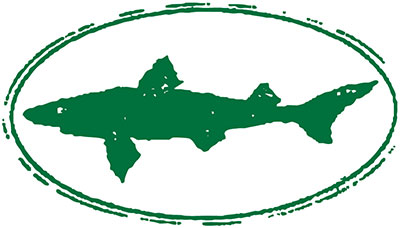Q&A: Punk rocker Jon Langford on death, digital art and Dogfish Head
Dogfish Head Founder and President Sam Calagione first fell for artist Jon Langford’s work when he saw it on the walls of Chicago’s rock and beer emporium Delilah’s. Sam had been on the lookout for an artist to paint a label for Olde School Barleywine, and he knew he’d found his man. Since then, Jon – best known for his roles in the British punk band The Mekons and the Chicago-based country-punk band The Waco Brothers – has been called upon for all sorts of Dogfish Head projects, from Analog-A-Go-Go posters to labels for 75 Minute IPA and more. “It’s been a collaboration that I’ve enjoyed enormously,” says Jon. “Craft brewing reminds me of the early days of punk. I love the way that many of the brewers work together on berserk projects.”
Music, painting, illustration, writing, radio … you're often referred to as a Renaissance man. What motivates you to play in so many media?
I was born in Florence in 1498 and have a long white beard ... errr ... Why I have to do all these different things is the sort of insightful question my wife might ask, and I have no real answer. The art and the music definitely come from the same part of the brain and form the bulk of my creative output. I've always loved radio as a medium and was lucky enough to have the nice people at WXRT (Chicago's Finest Rawk!) let me do a show for a few years where I could ramble on and play the weird stuff I enjoy that doesn't normally make it onto the airwaves. Writing is a solitary activity, and for that reason I tend to shun it, but it keeps coming back ’round to bite my sorry arse. I think it’s something that I might do more of.
Skeletons (more on them later) and legendary musicians show up in almost all of your work. Beyond their influence on you as a musician, what is it about music icons that inform your paintings?
I was an art student when punk rock hit the UK in 1976. I immediately threw down my brushes and formed a band with some other art student mates. After 15 years driving around in a van, I decided to try my hand at painting again, and all the experiences I'd had with the evil music biz monster sort of bubbled up into my work. I'd been reading a lot of biographies of people like Hank Williams and Bob Wills, and their stories rang true with my own experiences. I was sad to see that most of the great music made in the U.S. in the 20th century was pretty much absent from the airwaves. The paintings started out as little tributes to my heroes and ended up as snarky critiques of the philistine wasteland America had become.
Back to those skeletons … why all the death?
The Waco Brothers had a song about the death of country music, and I liked the idea of Mexican Day of the Dead art and old Dutch vanitas etchings and paintings – rich blokes sitting at their tables with skulls, egg-timers, candles burning down. Ominous stuff … you can’t take it with you! I invented a character called Lofty Deeds from a saying in an old etching I found: "All the fame of lofty deeds must perish like a dream." I also spent a lot of time looking at old country & western promo photos, and there were always guys that time forgot with names like Shorty Cunningham or Slim Bucket, etc., so Lofty Deeds became a forgotten cowboy singer who gradually turned into a skeleton. A couple of paintings turned into a song, then an album, and finally a really cool multimedia stage production by House Theater in Chicago.
Your paintings have a very analog feel. Can you describe your process?
You hit the nail on the head there. I went to an exhibition of graduating student work at the art college in my hometown in Wales in the ’90s and hated everything. The school was only doing digital art. No more drawing, painting, sculpture or printmaking. It was a bit of a shock to me. All the work was so reliant on the latest software. It was all a bit pathetic. I decided to see if there was any life left in little rectangular pieces of painted wood that you could hang on your wall. Probably the years on the road with the Mekons where I didn't make much visual art helped me get excited about trying to paint again.
Love the prints on wood. What inspired that vs. a traditional path?
I started showing my stuff at Yard Dog in Austin, Texas, around 1996 and was exposed to a lot of outsider folk art, and while I am anything but an outsider, I was impressed with the use of found materials. I spend more time in the hardware store than the art shop.
Thanks, Jon. Just one more question: Do you have a favorite Dogfish Head beer?
I enjoy a pint of Shelter Pale Ale at the brewpub in Rehoboth when we get there to play, and 60 Minute is a reliable chum when traveling the rest of the country.
To see more of Jon's work, pick up some Immort Ale, Olde School Barleyine, 75 Minute IPA or Burton Baton.


